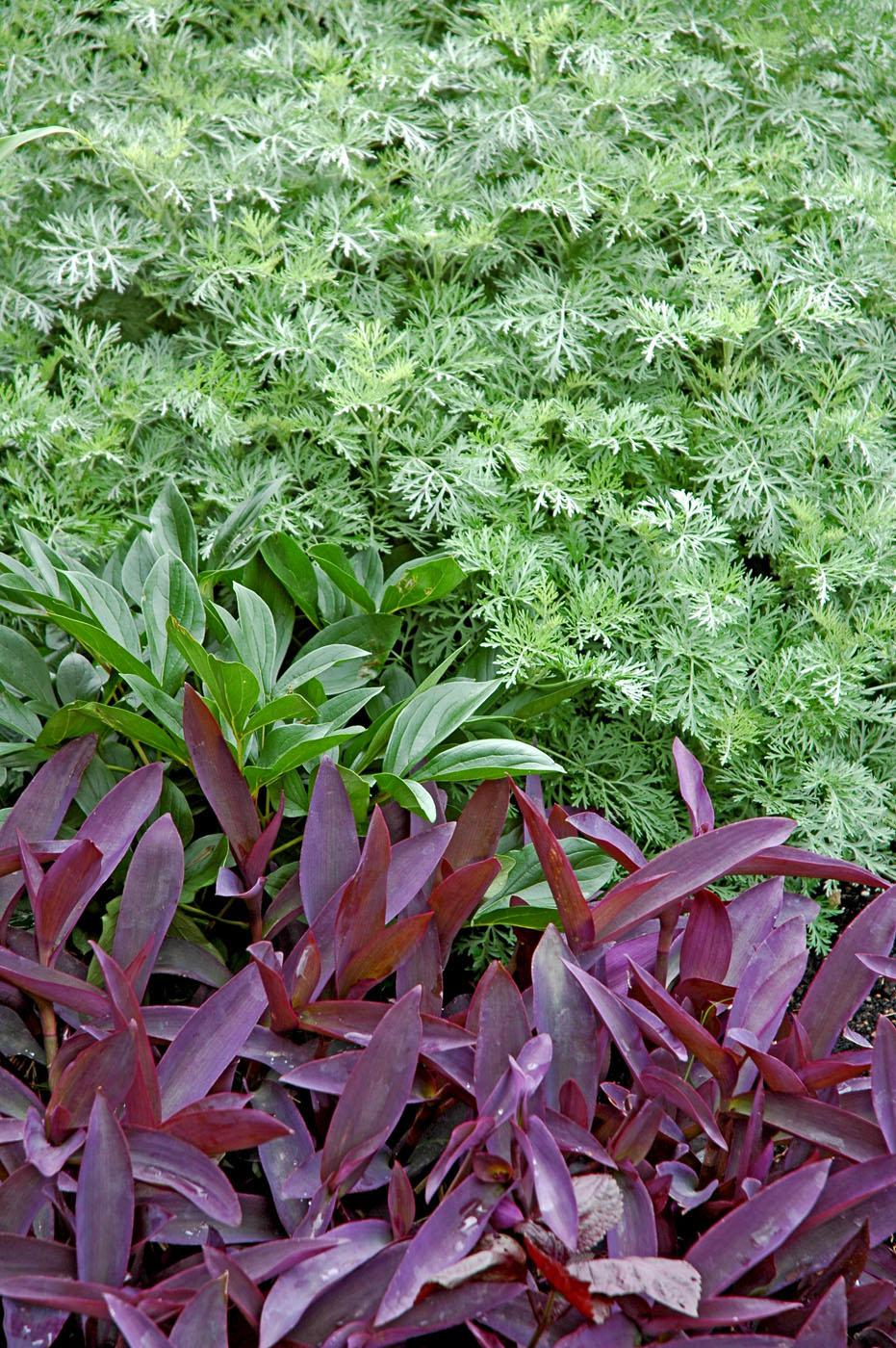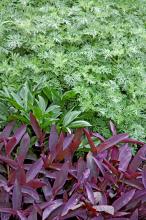Information Possibly Outdated
The information presented on this page was originally released on May 18, 2006. It may not be outdated, but please search our site for more current information. If you plan to quote or reference this information in a publication, please check with the Extension specialist or author before proceeding.
Powis Castle artemisia is gardeners' dream plant
By Norman Winter
MSU Horticulturist
Central Mississippi Research & Extension Center
One of the most beautiful plants for the spring and summer garden is the artemisia, and I am convinced it is not being used enough, especially the hybrid known as Powis Castle.
We filmed an upcoming Southern Gardening TV segment at the garden of Rhonda and Tracy Simpson in Sumner. Rhonda uses artemisias to perfection throughout her garden.
One combination planting everyone will admire has Powis Castle partnered with Purple Heart. Powis Castle -- which most consider our best artemisia -- has feathery gray foliage and was very showy against the deep, dark purple-leafed Purple Heart, also commonly called Setcreasea.
Another irresistible partner Rhonda uses in the garden with Powis Castle is the heirloom plant rose campion. In addition to the colorful, iridescent rose flowers, it has grey, fuzzy, silky leaves.
Artemisias offer gardeners a wide array of species to choose from for adding a gray foliage effect to the flower garden. The gray foliage seems to intensify the color of nearby flowers and other foliage, and ties together almost every color combination imaginable.
Consider planting it with the bright purple balls of All Around Gomphrena or Purple Coneflowers, Indigo Spires Salvia and Shasta daisies.
All artemisias share the same cultural requirements, which are plenty of sunlight and well-drained soils. Artemisias are native to the Mediterranean and while they don't need a luxurious soil, it has to be well drained. Rhonda's raised bed is ideal, composed of soil and composted gin trash.
Water to get them established, but then only sparingly. Overhead irrigation is not recommended. When new growth resumes in the spring, cut back mature plants that have become woody with a spindly look. You can divide the artemisia in the fall or early spring. Powis Castle is perennial in zones 6-8 and reaches about 3 feet tall. Late spring and early summer is a great time to plant the Artemisia, and it seems our garden centers have plenty of them in the herb section. When planting, make sure to plant at the same depth it is growing in the container.
If you read an herb book, you'll be surprised at how the plants have been used for centuries to treat just about every affliction imaginable. Other than the one known as French Tarragon, most have less enticing common names such as wormwood and mugwort. The wormwood is used to flavor the liqueur, or should I say wine, known as vermouth.
In addition to Powis Castle, Rhonda also has some nice specimens of Silver Mound, Silver King and a ground cover area of the very vigorous Oriental Limelight, with its cream and green variegation.
While every garden needs the color green, once these are in place, the real garden fun can begin by using grey foliage plants like the artemisia.








